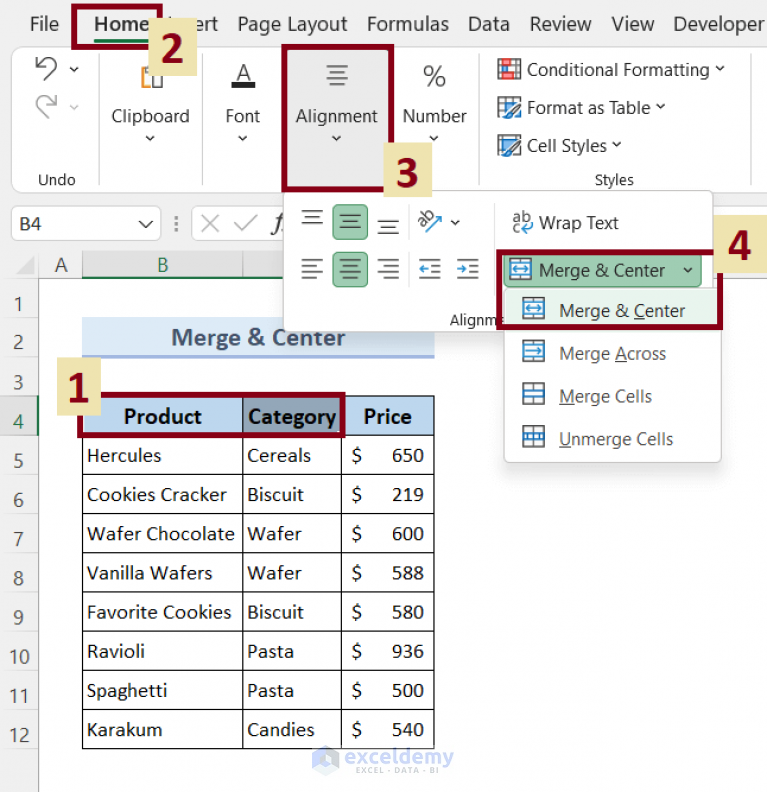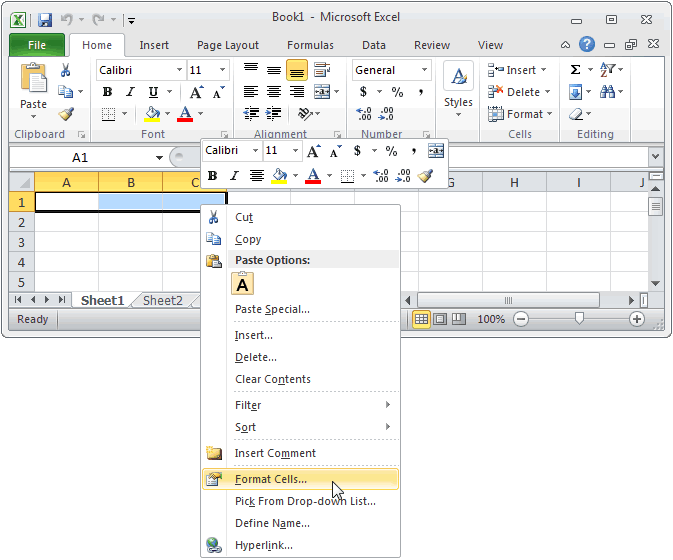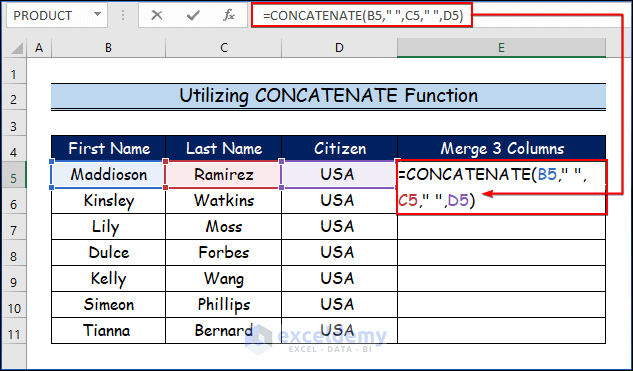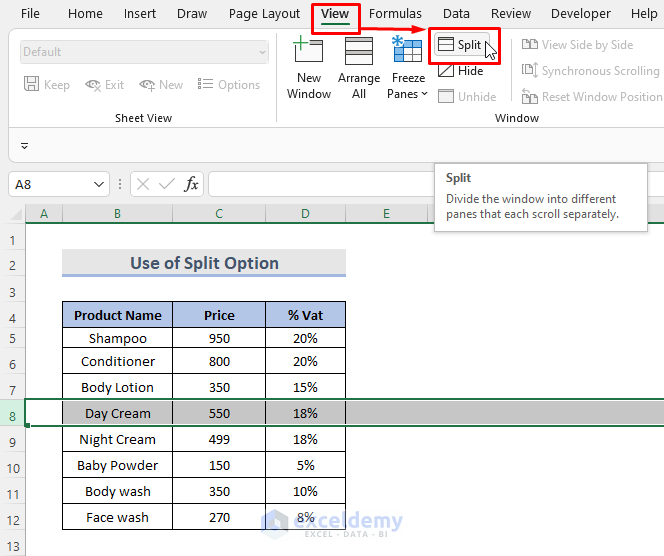5 Ways to Merge Columns in Excel Easily

Merging columns in Microsoft Excel can streamline data management and analysis processes, making your work more efficient and organized. Excel offers several methods to combine the contents of multiple columns into one, each suited for different scenarios or user preferences. Here are five practical ways to merge columns easily in Excel:
1. Using the Ampersand (&) Operator

The ampersand (&) operator is a simple way to concatenate text from two or more cells in Excel.
- Select the cell where you want the merged result to appear.
- Type
=A2&B2to combine the contents of cell A2 and B2. If you need a space or other delimiter between the contents, insert it in quotes:=A2&” “&B2. - Press Enter to apply the formula.
💡 Note: This method is best for combining text with straightforward concatenation.
2. Using CONCAT or CONCATENATE Functions

The CONCAT function (in newer versions of Excel) or the CONCATENATE function (for compatibility with older versions) allows for merging multiple columns.
- Choose the destination cell for your merged data.
- Use
=CONCAT(A2, ” “, B2)or=CONCATENATE(A2, ” “, B2)to join cell A2, a space, and then cell B2. - Press Enter to get the result.
💡 Note: CONCAT supports an array of references, making it versatile for combining multiple cells.
3. Employing Text to Columns

While typically used for splitting data, Text to Columns can also be used for merging columns through a few creative steps.
- Place the content of two cells you want to merge in the same column, separated by a space or any delimiter.
- Select the column containing your merged data.
- Go to the Data tab, click Text to Columns, then choose Delimited and specify your delimiter.
- Click Finish to join the data in a single cell.
💡 Note: This method requires a workaround by initially separating data to then combine it.
4. Using Power Query

Power Query, a robust data transformation tool in Excel, can be used for sophisticated column merging.
- Load your data into Power Query Editor.
- Select the columns you wish to merge from the table.
- Click on Merge Columns under the Transform tab, choose a separator, and rename the column if necessary.
- Finish by closing and loading the data back to Excel.
💡 Note: Power Query is ideal for large datasets or when performing multiple data transformations.
5. Excel Formulas (TEXTJOIN, IF, and CHOOSE)

Advanced Excel users can leverage several functions to dynamically merge columns:
| Function | Description |
|---|---|
| TEXTJOIN | Combines text from multiple ranges with a specified delimiter. |
| IF | Allows conditional merging based on specific criteria. |
| CHOOSE | Selects from a list of arguments based on an index number. |

- TEXTJOIN: Use
=TEXTJOIN(” “, TRUE, A2, B2, C2)to join cells from columns A, B, and C with a space separator, ignoring blank cells. - IF: For example, to merge only if conditions are met:
=IF(A2=“Yes”, A2&B2, B2). - CHOOSE: Use
=CHOOSE(A2, “First Option”, “Second Option”)to select between options based on the value in cell A2.
💡 Note: These functions provide dynamic merging capabilities for complex scenarios.
In summary, merging columns in Excel can be done in various ways, from simple concatenation using the ampersand to more complex merging with Power Query. Each method has its strengths, suited for different data manipulation tasks. Understanding these options allows you to select the most appropriate technique based on your specific needs, enhancing productivity and data clarity in your Excel projects.
Why would I need to merge columns in Excel?

+
Merging columns in Excel helps to consolidate data for better readability, analysis, and presentation. It’s useful for creating summaries, preparing data for reports, or even just organizing information more effectively.
Can merging columns cause data loss?

+
Merging columns using the described methods does not inherently cause data loss, as the original data remains intact. However, if you’re not careful, you might overwrite data in the destination cell, so always ensure you’re working with backup copies when manipulating data.
What is the difference between CONCAT and CONCATENATE?

+
CONCAT and CONCATENATE functions perform the same basic operation of joining strings together. However, CONCAT, introduced in newer versions of Excel, is more powerful as it can handle arrays of text values directly, while CONCATENATE requires individual arguments for each piece of text.
How do I avoid delimiter issues when merging columns?

+
To prevent delimiter issues, choose a separator that does not appear in your data, or use multiple delimiters in a consistent manner. Excel functions like TEXTJOIN can automatically ignore blank cells, reducing the risk of delimiter clutter.
Are there limitations when merging columns with Excel?

+
The main limitations are related to the Excel workbook size limits (number of rows and columns) and the cell content length limit of 32,767 characters. Complex formulas might also slow down the workbook when handling large datasets.



